Rose farming is a very common and popular business throughout the world. Rose is actually one of the leading flowers in global floriculture. It is used in almost every event and the flowers have good medicinal value.
Roses are actually available in various sizes, shapes and also in different colors These flowers have unique aroma, that’s why it is used in many events.
Rose petals have many medicinal properties that include stress and depression relief. The petals are also used to treat acne. Roses are mostly used in perfumes and in the preparation of rose water (which is used for cooking, cosmetics, medicine and in religious practices). The flowers are also rich in volatile essential oils.
Rose is actually a woody perennial flowering plant of the genus Rosa, in the family Rosaceae, or the flower it bears.
There are actually over 300 species and tens of thousands of cultivars. They form a group of plants that can be erect shrubs, climbing, or trailing, with stems that are often armed with sharp prickles.
Depending on the species, the flowers vary in size and shape, and are usually large and showy. Common colors of the flowers range from white through yellow and red.
Most of the species are native to Asia, with smaller numbers native to Europe, North America and northwestern Africa.
The species, cultivars and hybrids are all widely grown for their beauty and often for their fragrant and medicinal value.
Roses are the flowers, that have acquired cultural significance in many societies.[1]
Rose plants range in size from compact, miniature to climbers that can reach seven meters in height. Different rose species hybridize easily, and this has been used in the development of the wide range of garden roses.

Roses are actually best known as ornamental plants which are grown for their flowers in the garden and sometimes indoors. They have been also used for commercial perfumery and commercial cut flower crops. Some are used as landscape plants, for hedging and for other utilitarian purposes such as game cover and slope stabilization.
Rose Water Nutritional Benefits
Rose water is very healthy and it has many nutritional benefits. Rose water is created by distilling rose petals with steam. It is fragrant, and it is sometimes used as a mild natural fragrance as an alternative to chemical-filled perfumes.
People are using rose water for thousands of years, including in the Middle Ages. It is thought to have originated in what is now Iran.
Roses have been used traditionally in both beauty products and food and drink products. It also comes with plenty of potential health benefits. Here we are shortly describing about the top advantages of consuming rose water.
- Rose water is a very good source of anti-inflammatory properties, and it is one of it’s greatest benefits. And these anti-inflammatory properties can help treat multiple ailments (both internal and external). Rose water may even help soothe the irritation of eczema or rosacea.
- Rose water has traditionally been used to soothe sore throats.
- It has been used as a beauty product for thousands of years. So, it’s no surprise that it can improve your complexion and reduce skin redness. The antibacterial properties may help for reducing acne, and the anti-inflammatory properties can reduce skin redness and puffiness.
- Rose water has powerful antiseptic properties. And it can prevent and treat infections. Because of this, rose water is often included in a variety of natural and medicinal treatment.
- Both rose oil and rose petals contain a number of powerful antioxidants, which can help to protect the cells from damage.
- Rose water has antibacterial and antiseptic properties that can help wounds heal faster. These properties can help clean and fight off infection of cuts and burns (and can also help cuts, burns and even scars heal faster).
- Rose water have strong antianxiety and antidepressant properties. And these will help to enhance your mood.
- Rose essential oil and rose water are commonly used in aromatherapy to help relieve headaches.
- In addition to soothing irritated skin, rose water may reduce the appearance of wrinkles when applied topically. That’s why it is often used in beauty products to reduce wrinkles.
- Rose water has been used to aid digestion and reduce digestive upset in folk medicine. It may also improve bile secretion, which can further aid digestion.
Advantages of Rose Farming
Commercial rose farming business is very easy and it has many advantages/benefits. Rose plants are actually grown throughout the world. The plants generally require less care, and it’s very easy to start this business.

As it is very easy to start and run this business, so you can start commercial rose farming business for making profits.
You can start this business easily, even if you are a beginner. Here we are shortly describing about the top advantages of commercial rose farming business.
- Rose farming is a very old business idea. Many people around the world are already doing this business.
- Caring for the rose plants is very easy, even the beginners can grow them. So, you can take this opportunity for making profits.
- Demand and price of roses are very high in the market. So, you will probably be able to easily sell the products in the market.
- The rose plants generally grow almost everywhere with very little care.
- Commercial production of roses can be a good business idea for you, especially if you are an unemployed educated person.
- Commercial cultivation of roses can be a great employment source for the rural people.
- Production and other costs are relatively less in this business. But the return is very good. So, you will be able to make good amount of profits.
- Marketing roses is very easy. Roses have very good demand in almost everywhere around the world. You will probably be able to easily sell your products in the local market.
- Roses enhance the beauty of a property. Commercial cultivation will give you lots of money and peace of mind.
- Roses are also rich in medicinal values.
- Consuming rose water regularly has many health benefits. And you can enjoy fresh rose water if you grow the roses of your own.
How to Start Rose Farming
Starting rose farming (either commercially or in small scale) is very easy and simple. The rose plants generally require less caring and other management. So, you will be able to easily start and operate this business, even if you are a beginner.
The rose plants generally grow well in almost all types of environment throughout the world. And the plants can grow in a wide variety of soil types.
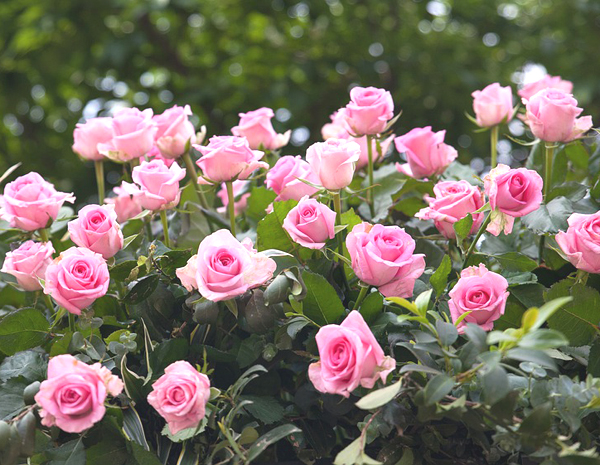
If you are willing to start rose farming, this guide will help you. Here we are trying to describe more information about starting and operating this business from planting, caring to harvesting and marketing.
Select Good Location
First of all, you have to select a very good location for starting your rose farming business. Rose plants grow well in well-drained sandy loam soil, which is rich in organic matter.
The pH level of the soil should range between 6 and 7.5. The rose plants are sensitive to waterlogging and that’s why a proper drainage system should be maintained.
The plants can grow well in the rainfall of 200 to 300 mm. Sandy loam, red loam and silt loam with good water holding capacity are ideal for rose farming.
Prepare the Soil
Prepare the soil perfectly for getting good production. Carry out several ploughing and hoeing operation for bringing the soil to fine tilth.
Add as much organic fertilizers as you can 4-6 weeks before planting. Growing rose on bed is more profitable than growing individually in pit.
While preparing the bed, add some Super Phosphate along with adding organic fertilizers. And finally carry out leveling operation.
Climate Requirement For Rose Farming
Roses are available in almost everywhere throughout the world. But the roses can’t grow well in humid climate, but they can tolerate high temperatures.
Temperature below 10°C will affect flowering and also develops blind shoots and bullheads.
The rose plants need complete exposure to sun rays. So, shady areas are not suitable for rose farming.
Ideal temperature for the growth and good yield of rose flowers is between 18°C and 30°C, and the sowing temperature varies from 25°C to 30°C.
Choose A Variety
There are many different varieties of roses available to choose from. And all these varieties are classified into 3 main groups namely species roses, old garden rose and modern roses.
Species Roses: These are actually called wild roses. They have bright colors and five petals. They last a long time in winter. Rosa rugose, Banksiae, Multiflora, Foetida etc. are some example of species roses.
Old Garden Rose: These are very attractive and scented roses which grow very easily and sustain well in winter. Noisette, Alba, Macrantha, Centifolia and Moss Roses are some example of old garden roses.
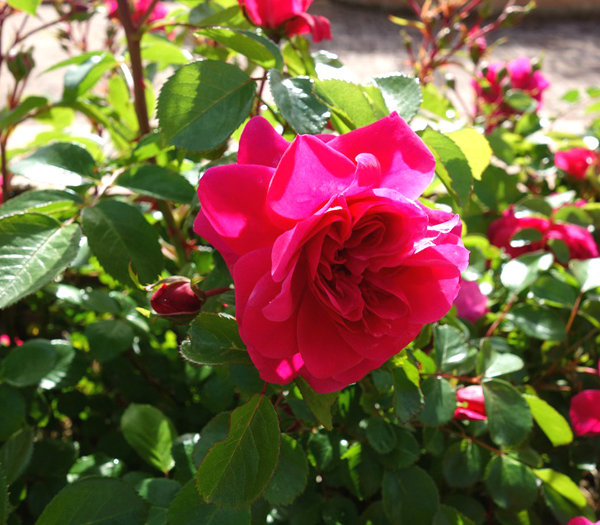
Modern Roses: Modern roses are the most popular, and they are obtained from cross-breeding of hybrid tea and primrose which are in various colors rich and vibrant. Examples of some of the modern roses are Hybrid Tea Roses, Landscape Rose, Floribunda Rose, Yellow Permet Rose, Grandiflora Roses, American Pillar, Centifolia Rose, Polyantha etc.
Purchase Cuttings
Propagation of roses is done by rotted cutting or budding on briar root stocks. These cuttings are easily available in almost every nurseries. Hope you will be able to easily find these cuttings in your local market.
Planting
Rose plantlets are planted in the circular pits of about 80cm meters across and 70 cm deep. The plantlets should be planted during September to October.
Rose plantlets can be propagated by seeds, cutting, layers and by budding. Budding is the ideal method for commercial propagation of rose plants. And always complete the plantation tasks in the evening hours.
Caring
Rose plants generally require less caring and other management. Although, taking additional caring is important for commercial rose farming business.
Caring the rose plants is very easy and simple. Here we are trying to describe more information about the caring process of rose plants.
Fertilizing
You should apply NPK at the ratio of 8:8:16 grams per plant at the interval of 3 months after planting. For increasing flower production, apply the fertilizers after completing the pruning method.
Watering
Adequate water is very important for the proper growth of the plants. The plants should be watered twice in a week from October to March and once in a week from April to June.

Don’t provide any irrigation during the rainy season. Maintain proper drainage system for avoiding any waterlogging situation. For commercial production, drip irrigation is considered best.
Mulching
Mulching is very important for retaining moisture into the soil. It also helps to prevent weeds. Agrowaste such as straw, grass clippings, rice husk, saw dust, dried leaves etc. are very good for using as mulch. Today, modern rose farmers are using polyethylene black or white sheet to mulch, and it has proved effective results.
Pruning
Pruning is very essential for obtaining optimum production, because too many branches or shoots reduce the quality of flowering. Pruning should be done during the winter time.
The first fornight of October is considered as the ideal time for pruning. Rose plants take about 35 to 60 days from pruning to flowering, but it mainly depends on variety and severity of pruning.
Pests & Diseases
The rose plants are susceptible to some common pests and diseases. Here we are shorty describing about these.
Pests
Common pests of the rose plants include caterpillar, thrips, aphids and leaf hopper. You can control caterpillar infestation by spraying Methomyl along with sticker at the rate of 1 ml per litter of water.
And in case of thrips, aphids and leaf hopper infestation spray Methyl Demeton 25EC at the rate of 2ml per liter of water, or Carbofuran 3G at the rate of 5 grams per plant.
Diseases
Some common diseases of the rose plants are leaf spot, powdery mildew and dieback. You can control leaf spot infestation by spraying Copper Oxychloride or Mencozeb at the rate of 2.5 grams per liter of water. Repeat the spray with interval of 8 days.
In case of powdery mildew infestation spray Flusilazole at the rate of 40ml plus Teepol at the rate of 50ml per 100 liters of water per acre.
Dieback is also a common disease in rose plants and it can cause big loss if not controlled properly. If you observe dieback infestation, spray Chlorothalonil at the rate of 2 grams plus Teepol at the rate of 0.5ml per liter of water.
Harvesting
The rose plants don’t produce much flower in the first year. And economical yield from the rose plant is obtained from the second year of cultivation.
Harvesting can be done by using sharp hand pruners and when the color of flower is fully developed and the first two petals start unfolding.
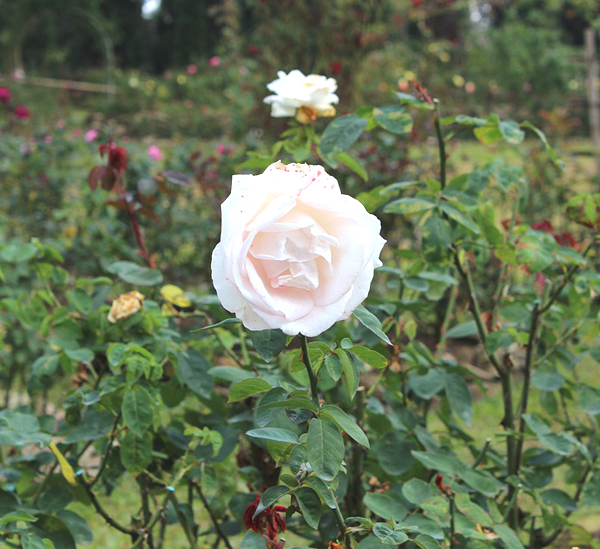
Harvesting should be done early in the morning or in late afternoon. Place the flowers in a container filled with freshwater having disinfectant and preservative.
The flowers are preserved in precooling chamber having 10°C to 12°C for 12 hours then the flowers are graded based on the stem length and quality.
Yield
It’s not possible to tell the exact amount. It depends on many different factors, including varieties, soil quality etc. Generally, a rose plant produce about 25 to 30 flowers. In an acre, for average of 5,000 plants yield about 150000 roses.
Marketing
Marketing roses is very easy. Roses have very good demand an value throughout the world. Hope you will be able to sell your products easily in the local market.
These are the common steps and ways for starting and operating a successful rose farming business. Hope this guide has helped you! Good luck & may God bless you!
Frequently Asked Questions
Many people ask questions about rose farming business (especially the beginners). Here we are trying to list the most common questions about this business, and trying to answer them. Hope you will find your answer. Don’t hesitate to ask us if you have more questions.
Is rose farming business profitable?
Yes, commercial production of roses is a very profitable business. But you have to have good marketing facilities. Otherwise your production will not be much profitable.
How to start commercial rose farming business?
Starting a commercial and profitable rose production business is very easy and simple. Just select a good land for your production, make an effective business plan, select the right type of rose, plant the plants, take good care of them. And try to determine your marketing strategies before starting this business.

Where do roses grow best?
Roses grow best in moist and well-drained soil which is rich in organic matter. And availability of full sun is a must for growing roses.
How long does it take roses to grow?
Roses generally grow fairly rapidly. Most of the roses bloom 6-8 weeks after planting. And once the bloom is off the rose, deadhead it and prepare for another round of blooms within six to eight weeks.
Is rose difficult to grow?
No, not at all. Actually, anyone can grow them and caring the rose plant is relatively easy.
Do rose plants need lots of water?
Yes, they need lots of water. These plants need at least 2 gallons of water twice per week in the growing season.
What is best fertilizer for roses?
Rose plants are heavy feeders and they require high nutrients. Using organic fertilizers is always good. Use a fertilizer which is high in nitrogen fertilizer or top dress with alfalfa meal (5-1-2) for the first application to jump-start leaf development, along with epsom salts to encourage new cane development and lusher growth.
What is the fastest growing rose?
New Dawn is the fastest growing rose.
How many roses do you get per plant?
Depends on many factors. But on an average, you can expect around 30 flowers per plant.
Do roses like full sun?
Yes, roses require full sun for optimum production.
How do you make roses grow bigger?
You can make roses grow bigger by using a balanced fertilizer, such as compost or rotted manure.
How long roses last?
Typically, the cut roses last up to one week.

How do you increase flowering in roses?
Applying fertilizer and water on schedule will increase flowering in roses.
What kind of soil do roses like?
Roses generally like loam soil.
How do you make roses grow faster?
You can make roses grow faster by using a balanced fertilizer, such as compost or rotted manure.
Which roses bloom all year?
The Floribunda roses bloom continuously throughout the year.
What kind of rose is easy to grow?
Rose like Snowdrift is very easy to grow.
Can roses be grown from seeds?
Yes, roses can be grown from seeds. Propagating roses from seed takes a little time but is easy to do.
Can I grow roses from cuttings?
Choose healthy stems of the current season’s growth and follow the cutting guides.
How do you water roses?
You can give your roses 1-2 inches of water each week during the flowering season.

What is the life cycle of a rose?
The stages in the roses life cycle is the seeds, then the propagation next, the young rose then, the growing season, and finally the dormancy of the rose.
How long do rose plants live?
Depends on numerous factors. But average lifespan of the rose plants can vary from just 6 years to several years, even hundred years.



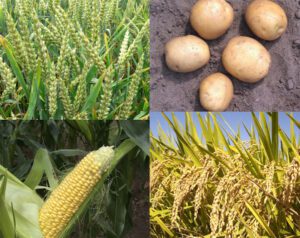


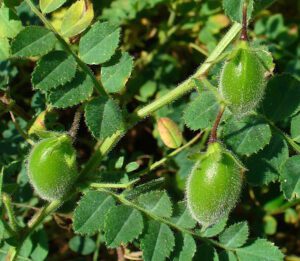
Good afternoon. Thank you, so much for the information on rose farming, as a beginner.
I am so interested to start my commercial farming. How do i get funding.
Kind regards
Patricia Moumakwa
Many commercial banks provide loan for this purpose. You can contact some banks in your area for getting loan. Thank you!